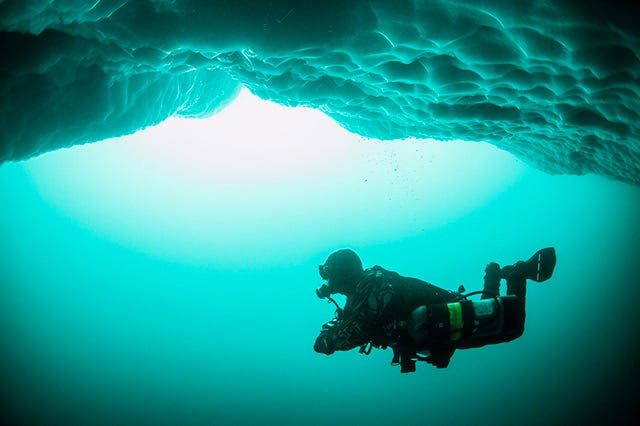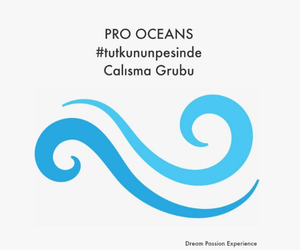Over 25 years ago, I led a National Geographic diving team on the first cave dives inside the largest floating piece of ice ever recorded—Iceberg B-15, which had calved from an Antarctic ice shelf. At the time, I was warned not to use politically charged terms like “climate change” or “sea-level rise” in the script I wrote for the documentary “Ice Island”. Scientists are always cautious about linking a single event to the long-term progression of climate change. Still, here we are in a world of bigger wildfires, atmospheric rivers and dangerous tornadoes. There is no doubt that we have been in a state of denial regarding the impacts felt on a warming planet.
Today, polar ice is collapsing at a faster rate than predicted, and headlines regularly warn of accelerating sea-level rise. Climate change is real. I’ve witnessed and documented it firsthand for decades, and how we respond in this late stage will shape the future of our civilization. That sense of urgency compels me to explore and document what remains of the ice in my homeland, Canada.
Last month, while working for the CBC in Newfoundland, I dove beneath remnants of the Greenland ice sheet—massive bergs that had drifted across the Davis Strait. Watching them dissolve and disappear in a matter of days is a sobering experience. While tourists marvel at their appearance, I see an endangered species, and I hope my films and photographs will draw attention to what we are losing.
Nobody knows exactly when the Arctic Ocean will be ice-free in summer, but scientists agree it’s inevitable, and likely within decades. My Arctic expeditions begin earlier each year as the Northwest Passage melts sooner and the ice grows thinner. The Inuit refer to the sea ice as “the land”—a foundation for travel, hunting, and the passing on of traditions. But that “land” is disappearing. How much longer will families be able to use traditional sleds, or even snowmobiles, to cross it?
As the sea ice vanishes, the Arctic food web unravels, disrupting marine life and food security for the people who rely on it. Permafrost is melting. Erosion and extreme weather are on the rise. As the Arctic becomes increasingly accessible, industries are racing for drilling rights and shipping routes, threatening an already stressed ecosystem.
On a recent expedition, I witnessed the instability of the ice firsthand. Rain carved rivers beneath our tents. While crossing the floe, our sled fishtailed in slushy meltwater like a boat in a wake. We dodged widening cracks, eventually bridging one with a snowmobile leap of faith. We raced toward a berg caught in the sea ice. Meltwater streamed down its flanks in vertical rivulets. It wouldn’t last long. We had to dive immediately. Beneath the surface, I pushed away slush and descended into the mixing layer of fresh and saltwater. Strands of algae trailed from the ice, feeding the plankton that sustains the Arctic food chain and absorbs atmospheric carbon. Currents tugged my safety rope as I dropped past fluted blue ice, marked with bands that may have captured 10,000 years of snowfall. Some layers were transparent, while others were clouded with dust, perhaps from ancient volcanic activity. Tiny bubbles fizzed and floated upward.
At the base, orange kelp waved above a miniature world of sponges and crustaceans. Looking up, I saw my dive partner drifting down in a silver stream of bubbles, silhouetted against the glowing blue. The beauty and the impermanence of this underwater cathedral struck me. Within 24 hours, that towering berg would crack loose and begin its southward drift. In a few weeks, it would tumble, melt, and disappear, releasing nutrients and freshwater, and contributing to the rising seas.
And then, it would be gone forever. Will humanity pay attention?
THE SCUBA NEWS Link !
DemirHindiSG 12 Ağustos 2025-20:06









